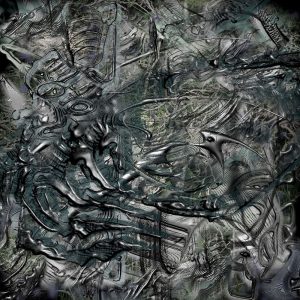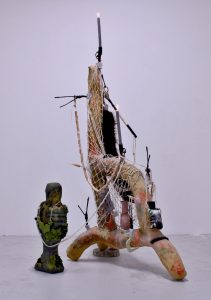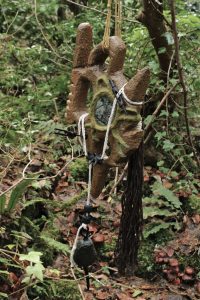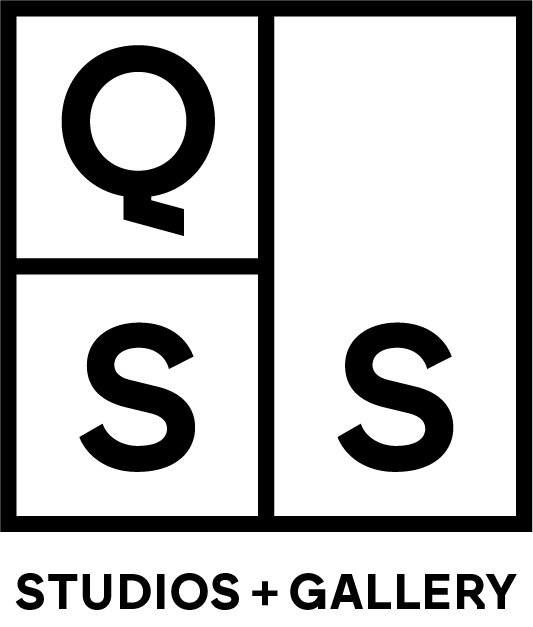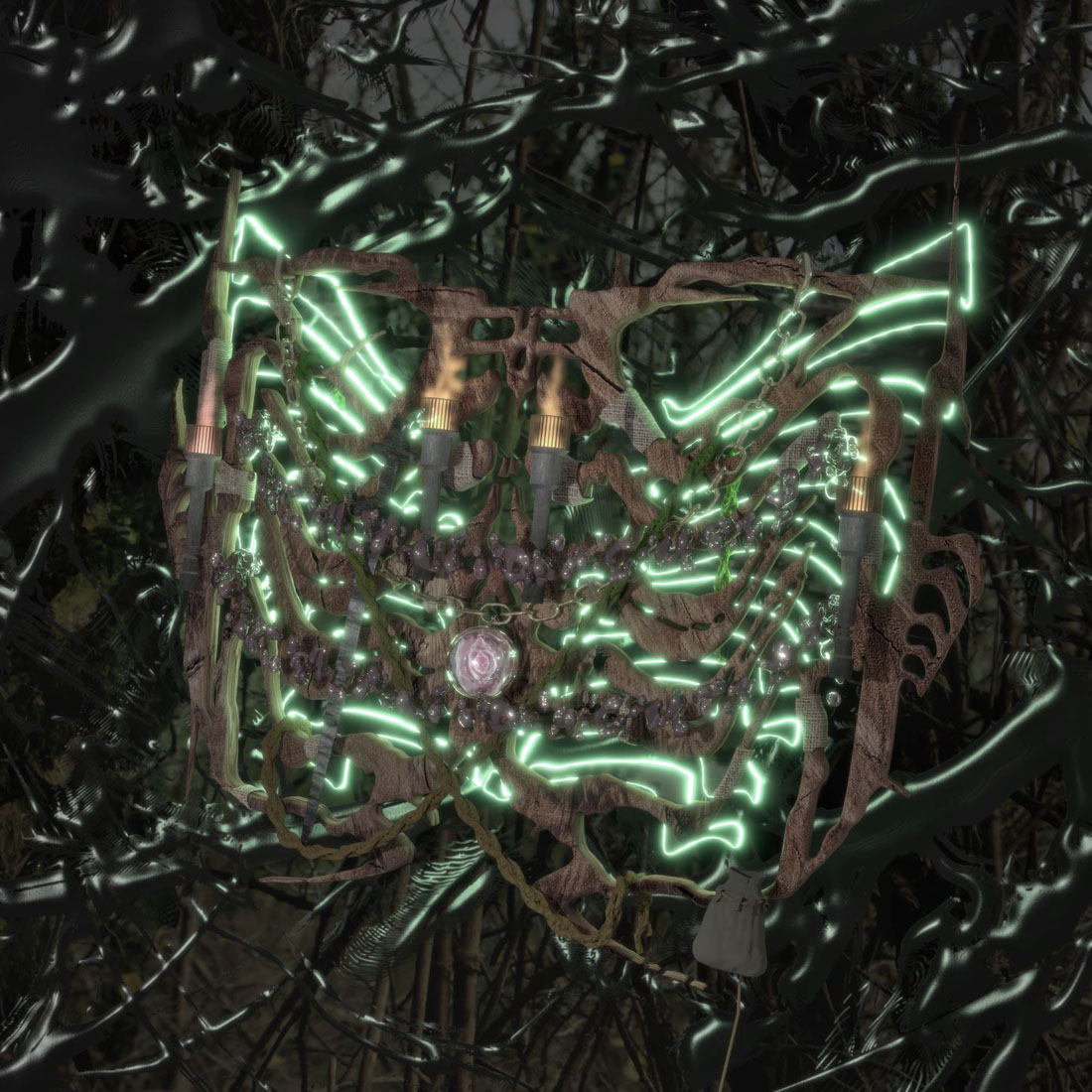What is your typical studio routine?
My studio routine generally begins by checking and responding to emails, then moving onto any sculptural or digital works that I’m working on. I’m quite careful to try and divide my time equally between working in sculpture and digital media, so when I’m at the studio, I generally focus on different processes of working with a wide variety of materials. I regularly take breaks to do a bit of sketching or 3D work to pursue some other ideas that sometimes get expanded on.
How do you describe your practice?
I often describe my practice as a mode of speculation, drawing upon themes of science-fiction to articulate morphing and shifting modes of materiality. My practice is very much informed by my research in contemporary theory regarding ecology and technology, however I feel that I am more of a process and material based artist rather than purely conceptual. I’m interested in feedback processes where the distinctions of real and virtual become quite blurry.
Is there a particular process or methodology within your practice that is important to you?
Despite that I work across a variety of media, I feel that it’s important for me to be grounded in materially based processes as a sculptor. Sculpture as a medium and methodology very much informs my thinking when working with different materials, such as concrete and thermoplastic, which then blends into my digital work in animation and image production.
How long have you been working as an artist?
I’ve been working as an artist more or less consistently since I completed my undergraduate studies at the Ulster University Art College, which is quite a while ago now! At times this meant working in studios that were less than ideal, or working from home, but regardless, I’ve tended to always maintain my practice in some form or another and am very grateful to have such a great studio space with QSS currently.
Is it difficult being back in the studio after an exhibition?
I find that it can be a bit tricky to pick up from where I left off from working on an exhibition because the process of putting together an exhibition is very time-consuming and involved in itself. What I find helpful is a change of pace, where there may be a bit more time to consider ideas that were generated through an exhibition that may feed into future works .
Describe how important art is to society?
That’s a tricky question. I suppose it depends on what is generally considered “Art”. Recently I find that I’m interested towards practices and processes that don’t typically reside within a standard definition of an artistic practice. This probably comes from my interest in archaeology and folk-craft practices. In short, yes, art is important to society, but it very much matters what is and isn’t regarded as “Art”, how those definitions are produced and who produces those borders of definition.
What do you dislike about the artworld?
I dislike the competitive and exploitative practices that exist in the wider art world, such as some galleries and organisations that don’t offer artist fees or have manipulative working practices. There’s definitely an imbalance of representation also, where if you are deemed to not have the right connections or outreach, maintaining an artistic practice can be made to be very difficult.
What is the best advice you have been given as an artist?
The best advice I’ve had has to always keep on with pursuing my practice, even if things become difficult in one way or another. I find that encouragement such as this really helps during moments of doubt, but through continuing the work, such as doing simple drawings or other activities, a path opens up to pursue future ideas.
What jobs have you done, other than being an artist?
I’ve worked quite a few other jobs in my time, such as a bookseller, installation technician, and working for BBC Audience Services. Yet, I’ve always tried to keep myself involved in art related pursuits, whether that be working as a voluntary co-director with Platform Arts or offering tutorial support to art college students.
About The Artist
Gerard Carson’s practice is concerned with the contingency of matter in the context of accelerated modes of technological production, ecological breakdown, and the indeterminate vectors of their effects/affects. By working via a speculative methodology, Carson’s works take the form of precarious assemblages comprised of bio-plastics and concrete, where computer modelling and 3D printers act as techno-symbiotic agents in the assemblage’s manifestation.
He has exhibited throughout Ireland, UK, and China. He has also been a recipient of the Frank Bowling Scholarship Award, which supported his MA Fine Art studies at the Chelsea College of Art. Carson is also a graduate of the Ulster University School of Art & Design. He has acted as a mentor to recent graduates from the Chelsea College of Art and has curated a number of exhibitions at ACAVA Maxilla Studios & Space. Carson is a former co-director with Platform Arts Gallery & Studios.
Websites: www.gerardcarson.com
Instagram: @gerard_carson87
